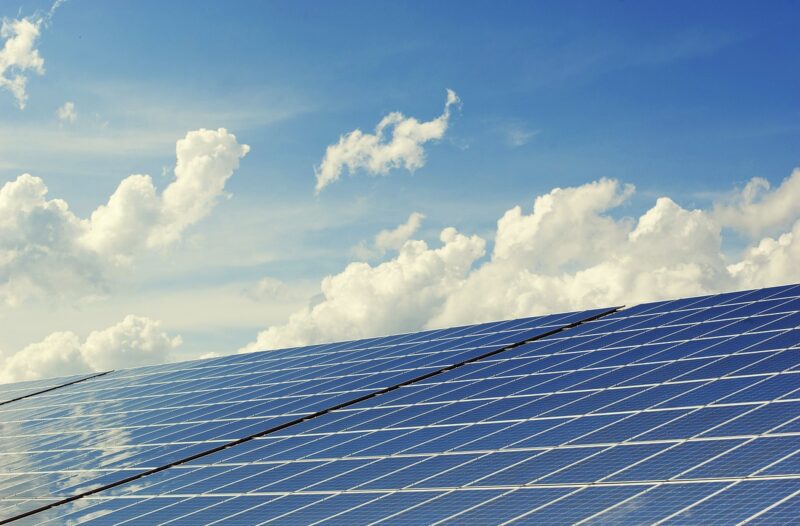How Solar Eruptions Impact Communication on Earth and Spacecraft Operations
November 12, 2024

Solar eruptions, also known as solar flares or coronal mass ejections (CMEs), are powerful bursts of energy and plasma from the sun’s surface. These cosmic phenomena can significantly affect communication systems on Earth as well as spacecraft operations in space. In this article, we will explore how solar eruptions impact our technology and the measures we can take to mitigate their effects.
1. Understanding Solar Eruptions
Solar eruptions occur due to complex magnetic interactions within the sun’s atmosphere. When these magnetic fields become unstable, they can release massive amounts of energy in the form of solar flares or a CME.
– Solar Flares: These are intense bursts of radiation that occur in the sun’s atmosphere. They can last from minutes to hours and release energy equivalent to millions of hydrogen bombs.
– Coronal Mass Ejections (CMEs): These involve the expulsion of massive quantities of plasma and magnetic fields from the sun’s corona. CMEs can take several hours to days to reach Earth and can create geomagnetic storms when they interact with Earth’s magnetic field.
The sun goes through an approximately 11-year solar cycle, during which the frequency and intensity of solar eruptions can vary significantly. During the peak of the solar cycle, known as the solar maximum, the likelihood of solar eruptions increases substantially.
2. Impact on Earth-Based Communication
Solar eruptions can adversely affect various communication systems on Earth:
– Radio Communications: Solar flares can cause high-frequency (HF) radio blackouts, affecting aviation, maritime operations, and emergency services. These disruptions can last from a few minutes to hours, depending on the strength of the flare.
– GPS Signals: CMEs can also disrupt GPS signals, leading to inaccuracy in location services. This is particularly critical for mobile navigation systems and aviation.
– Satellite Communications: Increased radiation exposure from solar eruptions can cause satellites to experience communication issues, decreased performance, and even fail if not adequately shielded.
Understanding the timing and location of solar eruptions is essential for planning and operational stability in various industries that depend on these communication systems.
3. Effects on Spacecraft Operations
Spacecraft operating beyond Earth’s protective magnetosphere are especially vulnerable to solar eruptions. The effects on spacecraft can be severe:
– Radiation Exposure: High levels of radiation during solar flares and CMEs can pose risks to both onboard electronics and astronauts. Prolonged exposure can damage electronic components or disrupt onboard systems.
– Communications Disruptions: Just like with Earth-based systems, spacecraft may experience communication delays or complete blackouts during solar eruptions. This can put incredible strain on missions, making it challenging to relay vital data.
– Orbit Changes: Increased atmospheric drag during geomagnetic storms can alter the orbits of low Earth orbit (LEO) satellites, requiring adjustments to maintain their intended paths.
Agencies such as NASA and the European Space Agency (ESA) are continuously monitoring solar activity through missions like the Solar Dynamics Observatory and the Solar and Heliospheric Observatory to predict and mitigate these risks.
4. Mitigation Strategies
There are several strategies that can be employed to mitigate the impact of solar eruptions on communication systems, both on Earth and in space:
– Monitoring Solar Activity: Constant monitoring and forecasting of solar activity can help industries prepare for potential disruptions. Advanced warning systems can give users time to adjust their operations when a solar eruption is detected.
– Hardening Infrastructure: For satellite systems, shielding technology can protect essential electronics from radiation. Earth-based systems can also benefit from designing for resiliency against solar-related disruptions, such as using alternative frequency bands.
– Backup Systems: Having robust backup communication systems can help maintain operations during significant solar events, ensuring continued communication capabilities particularly for critical services.
Researchers are continually investigating new technologies and methods to protect our systems from solar eruptions, paving the way for safer, more reliable communication in the future.
5. Future of Solar Monitoring and Research
As our dependence on technology and communication grows, understanding solar eruptions becomes imperative. Advancements in solar observation and predictive modeling are underway and can lead to more accurate forecasting of solar activity.
– Research Initiatives: Collaborative research across the globe focuses on unraveling solar physics secrets and developing new technologies for monitoring solar activities, including next-generation satellites and ground-based observatories.
– Public Awareness and Preparedness: It is vital to educate the public and organizations about the potential impacts of solar eruptions on daily life and operations to spur preparedness and response strategies.
By enhancing our monitoring capabilities and understanding of solar phenomena, we can better protect our communication systems and technological operations in an increasingly solar-active environment.
Conclusion
Solar eruptions pose a significant threat to communication systems on Earth and spacecraft operations, impacting everything from GPS navigation to satellite communications. As we continue to rely heavily on these systems, it is crucial to understand and prepare for the potential impacts of solar activities. By leveraging advanced monitoring techniques, implementing mitigation strategies, and enhancing public awareness, we can safeguard our technologies against the forces of nature. Understanding solar eruptions not only enhances our communication resilience but also contributes to a broader understanding of our solar system’s dynamics.








